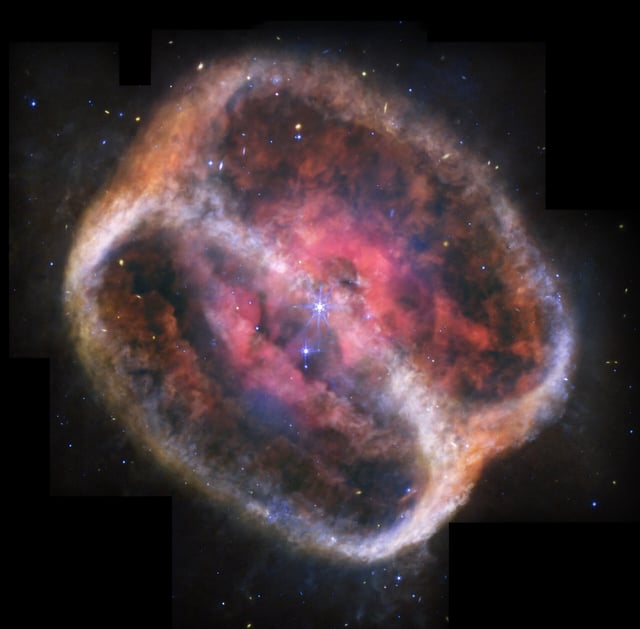Overview
- The James Webb Space Telescope has captured the most detailed mid-infrared image of planetary nebula NGC 1514, showcasing its complex morphology.
- The nebula features fuzzy dust rings, clear central voids, and an hourglass shape tilted at a 60-degree angle, shaped by interactions within its binary star system.
- At the core, two stars orbit each other in a tight nine-year path, with the dying star’s expelled layers influenced by its companion's gravitational pull.
- The rings, first detected in 2010, are now observed as clumped dust grains heated by ultraviolet light, revealing new details about their composition and structure.
- These findings enhance understanding of stellar death and the role of binary interactions in shaping planetary nebulae, marking a significant advance in space observation.
